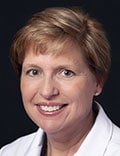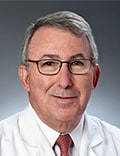In a region where the typical waiting time to see an adult rheumatologist can be at least 4-5 months, Aryeh Abeles, MD, can see patients within a week in his Meriden, Connecticut, private practice — even within a day if the need is urgent.

But many patients, he said, don’t reach his practice. Their primary care physicians (PCPs) practice within the large healthcare systems that dominate the region and are discouraged from making out-of-house referrals to independent rheumatologists, even when in-house waiting times are lengthy.
Abeles recently saw one patient — an older man presenting with severe and disabling symmetric hand and wrist pain — who was referred to a rheumatologist at Hartford HealthCare but faced a 3-month wait time and eventually demanded another option. “The referring doctor didn’t take the initiative — the patient had to demand it,” said Abeles, who has practiced for 20 years with his father Micha Abeles, MD.
“It is heartbreaking that people are needlessly suffering and getting delayed care, with all the attendant consequences,” he said. “Early diagnosis and treatment can make a huge difference in many diseases, particularly in diseases like RA [rheumatoid arthritis] or lupus where delays of weeks, let alone months, can lead to significantly worse outcomes.”
Abeles began being squeezed out of referral loops some years ago as consolidation picked up pace. His story illustrates how localized and multifaceted the problem with timely access to rheumatology care really is — driven in large part by workforce and demand issues but by other issues as well — and how it needs attention on multiple fronts.

“There are many reasons why access is an issue. It’s not always about workforce issues,” said Tien-I Karleen Su, MD, who founded and leads the Rheumatology Private Practice Alliance (RPPA) and chairs the American College of Rheumatology (ACR)’s recently rebranded Independent Practice Subcommittee, which was formerly known as the Community Practice Council.
Healthcare consolidation and its impact on referral patterns is a hard problem to tackle, but “bringing awareness to patients” may be an important approach to take, said Su, who practices in a multi-physician independent practice in Whittier, California.
Patients in large healthcare systems that include private practice physicians in their broader networks “need to know that there are independent physicians who can see them sooner” than those employed by the systems, she said. “Patients need to specifically ask their primary care physicians [for these referrals]…they need to fight for themselves.”
In other settings, including academic practices and independent practices with high demand, rheumatologists are trying to improve access by screening referrals, urging PCPs to proceed with fuller workups and participate more in management, increasing their utilization of nurse practitioners (NPs) and physician assistants (PAs), and otherwise triaging patients.

“There’s been a shift in the last 5-10 years as wait times have gotten much worse,” said Anisha Bharadwaj Dua, MD, MPH, professor of medicine, fellowship program director, and director of the Vasculitis Center at Northwestern University Feinberg School of Medicine, Chicago. Dua has worked on workforce issues with the ACR.
“Before, there was no sense (before a visit) of how sick a patient is. You’d have patients waiting forever who really needed to see you tomorrow, and patients seeing you tomorrow who probably could have benefitted from some additional workup or reassurance,” she said. Today, rheumatologists with long waitlists realize this way of practicing is no longer practical, and they’re intervening with “innovative changes.”
How such changes will affect the quality of care, she and others say, is largely unknown.
The Health of the Workforce
A poor prognosis for the adult rheumatology workforce was delivered in 2015 in a workforce study commissioned by the ACR that projected the supply of rheumatology providers (physicians, NPs, and PAs) would decrease by 25% from 2015 to 2030, leading demand to exceed supply by 102%.
Signs of positive change came with another analysis published in 2024 that showed that the number of clinical active rheumatology providers grew by more than 20% from 2009 to 2019 (23% growth of rheumatologists and 141% growth of advanced practice providers [APPs]). The studies used different sources of data, each with its own limitations for accurately understanding the workforce.
A look at fellows and training programs, meanwhile, offers mixed signs. In adult rheumatology, the number of slots increased from 2015 to 2024, and in 2024, 284 out of 287 positions in adult rheumatology were filled, Dua said during a session on the workforce at the 2025 Rheumatology Winter Clinical Symposium. (Pediatric rheumatology has seen declines in fill rates and is suffering a significant workforce shortage.)
However, despite growth in the total number of fellowship slots, several fellowship programs have closed, she said, leaving 10 states currently without a rheumatology fellowship program and furthering an already serious geographic maldistribution of rheumatologists. Almost all rural counties have no adult rheumatologists, compared with 48% of urban counties, according to the 2024 workforce study.
Meanwhile, wait times of up to 12 months to see a rheumatologist have been reported, Dua said at the meeting. In research conducted by ECG Management Consultants and published this year, rheumatology had the lengthiest average wait time — 68 days — of 11 specialties reviewed, she noted. For the report, researchers called practices throughout the US asking rheumatology practices for a new patient appointment for management of RA.
Working With Primary Care, Managing Referrals
Securing more support from PCPs and finding new ways to screen and triage patients have taken on increasing urgency. “We frequently see a somewhat knee-jerk response to patients who have a musculoskeletal or rheumatic disease complaint…to [too quickly] outsource it,” said Beth L. Jonas, MD, professor of medicine and chief of the Division of Rheumatology, Allergy and Immunology at the University of North Carolina School of Medicine at Chapel Hill. Jonas chairs the ACR’s Workforce Solutions Committee.

Given long wait times, she said, “we need to identify patients who really can’t wait…and empower our referring providers to learn more about our diseases and start the workup — even start the therapy if it’s something they can manage.”
For example, a PCP or an APP who is evaluating a patient with symmetric inflammatory polyarthritis with concern for RA could initiate an appropriate initial workup, including a thorough musculoskeletal exam, relevant laboratory tests, and radiographs. This “helps determine the urgency of the referral and enables the rheumatologist to potentially start DMARD [disease-modifying antirheumatic drug] therapy at the first visit,” she said.
The ACR is currently assessing the first year of usage and impact of its Rheumatology for Primary Care online resource, which provides guidance to PCPs and APPs about workups, treatment considerations, and the appropriateness of referrals. “On the front end,” said Dua, who co-chaired the arm of the ACR’s Workforce Solutions Committee that developed the tool, working with primary care is largely “about getting a patient teed up to see a rheumatologist, so the first visit can be most impactful and useful.”
And on the back end, for established and stable patients who need regular lab monitoring, for instance, “if PCPs can [help with monitoring and management] and alert me if there are any concerns, then patients may not need to see me as frequently,” allowing room for new patients, Dua said. She often communicates basic information to the PCP and then refers them to the ACR’s primary care tool for more detail.

Eric M. Ruderman, MD, also a professor of medicine at Northwestern, touts the value of telemedicine. Brief initial telehealth visits for positive antinuclear antibody tests and short virtual check-ins for management of gout medications, for instance, “seem to have shortened the wait times for in-person visits,” he said.
After reviewing charts to determine appropriateness, Ruderman has also been steering more new patients to his practice’s APPs, who previously handled only follow-up visits.
Such changes are not limited to academic practices. Stanley B. Cohen, MD, who practices in a large independent rheumatology group in Dallas, has not seen the referral impact of healthcare consolidation that Abeles has experienced. Instead, demand for his care is high, and he credits his ability to see new patients within a week or two to collaboration with his NP and PA, who now evaluate new patients before he joins them in the room for treatment decision-making.

“If you have a PA and NP who can see established patients on their own but can also see new patients, then you can get the supply and demand curve in order,” he said. (Rheumatologists at the nearby University of Texas Southwestern Medical Center, Dallas, typically have a wait time of 6 months for new patients, he said.)
Practices are also proactively defining conditions for referrals. In Hoover, Alabama, the independent Rheumatology Care Center describes on its website a specific process for referrals, citing high demand and long wait times. “There are simply not enough of us to see all the referrals, so we need to screen a large number of our referrals to see where we’re needed the most and where our skills are absolutely necessary,” Elizabeth Perkins, MD, explained in a video posted on the “referrals and new patients” part of the website.
“If your doctor marks issues around rashes, swollen joints, or sick internal organs, these referrals will get seen sooner,” she said in the video. And “if your doctor marks your referral for gout, vasculitis, ankylosing spondylitis, lupus, or rheumatoid [arthritis], these will get seen right away.”

John (Jack) Cush, MD, who is on the faculty at the Burnett School of Medicine at Texas Christian University in Fort Worth, Texas, and is the executive editor of RheumNow.com, said too many rheumatologists have been “passively receiving whatever comes their way without actively integrating themselves into the community about how patients should be referred.”
Rheumatologists need to “advertise the rules” for referral, Cush said, so that patients with the greatest need for immediate care, including the growing number with early or suspected RA, can be quickly seen and so that rheumatologists can “hit the ground running” in initial visits.
Impacts of Healthcare Consolidation, ACR Initiatives
According to the Physicians Advocacy Institute, nearly four out of five doctors (77.6%) were employees of hospitals, health systems, or other corporate entities as of 2023. Other organizations and studies have similarly shown declines in independent practice.
But the breakdown of practice settings for rheumatologists — how many are in private practice and how many are employed by academic centers, large healthcare systems, and other entities — is largely unknown, said Abeles, who sits on the ACR’s Independent Practice Subcommittee.
In June, Abeles received a Community Practice Innovation Award from the Rheumatology Research Foundation (RRF) to study such demographics. The project will employ a comprehensive commercial dataset from IQVIA to track practice affiliations for all rheumatology providers in the US from 2017 to 2025.
“We’re looking not only to describe what the workforce looks like today but also to identify trends in consolidation and how these may intersect with issues of patient access and workforce planning,” he said.
Abeles’ experience of being shut out of referral networks is shared by many, Su said, and the trend denies patients timely access because PCPs are often the “most nimble.” In an online discussion led by Su among members of the RPPA, rheumatologists relayed similar frustrations and cited wait times in their communities’ large healthcare systems of up to 12-14 months.
“Employed physicians are discouraged from referring externally,” said one rheumatologist. “It’s only when patients do their own research that they learn they can be seen sooner in our office.”
Said another rheumatologist: “Primary care physicians with the hospital systems refer within the hospital network only, unless the patient creates a ruckus and demands something different.”
The ACR’s Workforce Solutions Committee has been addressing workforce-related issues on multiple fronts, including with initiatives to support new fellowships and expand training opportunities for APPs. The ACR offers training courses for NPs and PAs joining rheumatology practices, and the RRF offers $25,000 grants to help support practices that are investing time in training new APPs. (Smaller grants cover the cost of the ACR courses.)
Grant applications and awards for the RRF Mentored NP/PA Award for Workforce Expansion have “taken off over the last few years,” with a lot of interest coming from communities that have a high need for additional rheumatology care, Jonas said.
APPs are playing a variety of different roles in rheumatology, she noted. In some practices, a PA may have their own patient panel, for instance. In others, APPs and rheumatologists alternate seeing individual patients. And in yet another model found in some rural areas of North Carolina, an APP is the primary point of contact and is supervised remotely by a rheumatologist.
Now that its Rheumatology for Primary Care website is a year old, the Workforce Solutions Committee aims to build upon ongoing communication with APP professional organizations with a “bigger dissemination push” of the primary care tool to APPs, Jonas said.
Sources for this story reported having no relevant conflicts of interest.
Source link : https://www.medscape.com/viewarticle/reducing-rheumatology-waitlists-applying-solutions-amid-2025a1000kc5?src=rss
Author :
Publish date : 2025-07-31 11:46:00
Copyright for syndicated content belongs to the linked Source.









